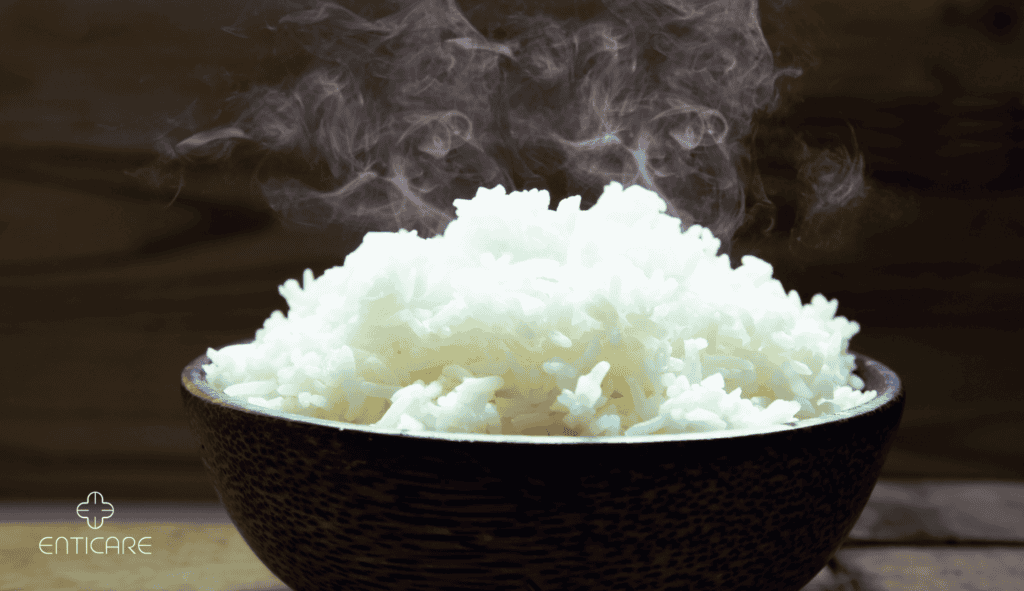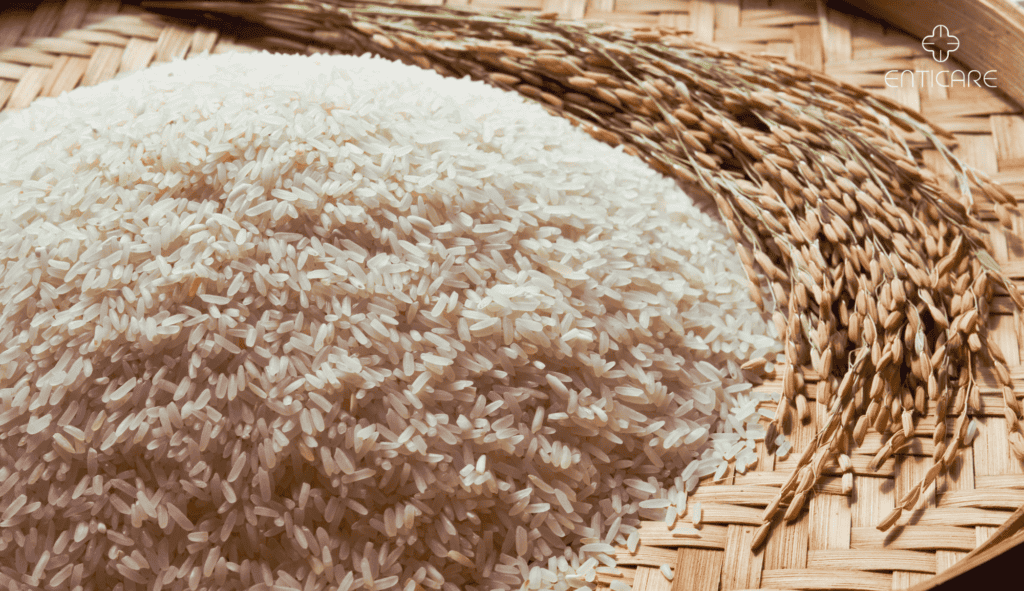If you or someone you love suffers from unexplained allergic reactions, you may not suspect an allergy to rice as the culprit. However, for some individuals, allergy rice can trigger uncomfortable and sometimes severe symptoms. Understanding the causes, identifying the symptoms, and knowing how to protect yourself are crucial in managing this condition. In this guide, we will explain how to spot rice allergy symptoms and take steps to avoid rice-related allergic reactions.
Understanding Rice Allergy: What You Need to Know and How Common Is Rice Allergy
What Causes Rice Allergy?
Rice allergy stems from the immune system’s response to certain proteins in rice. The identification of a major rice allergen has shown its significant role in triggering allergic reactions, especially in children. When your body identifies these proteins as threats, it triggers an allergy rice reaction. Although the exact reason why some individuals develop a rice allergy remains unclear, genetics and environmental factors often play significant roles.
How Rice Allergy Differs from Rice Intolerance
It’s essential to distinguish between rice allergy and rice intolerance. Rice allergy involves an immune system response, whereas intolerance leads to digestive issues without immune involvement. Symptoms of rice intolerance may include bloating, gas, and stomach cramps, but they are usually less severe than those of a rice allergy. Symptoms of allergy rice are typically more severe and involve an immune system response.
Risk Factors for Developing Rice Allergy
Individuals at higher risk of developing rice allergies include those with a family history of food allergies and people with other existing allergies, like hay fever or asthma. While rice allergy can develop at any age, it most commonly affects children and may continue into adulthood. Seeking medical advice is crucial for proper allergy rice diagnosis and management.
Common Symptoms of Rice Allergy
Skin Reactions
Skin reactions are among the most noticeable symptoms of rice allergy. These can range from mild rashes to severe hives. You might experience itching, redness, or swelling on your skin after consuming rice. In more severe cases, allergy rice may cause angioedema, which involves deeper skin swelling, typically around the face, lips, or throat.
Gastrointestinal Issues
Your digestive system may also respond negatively to rice. Gastrointestinal symptoms of rice allergy include stomach pain, nausea, vomiting, and diarrhea. These reactions can occur immediately after consuming rice or several hours later, making it harder to trace the allergy. Identifying gastrointestinal allergy rice symptoms can help in managing the condition effectively.
Respiratory Symptoms and Severe Allergic Reaction
In some cases, rice allergy may lead to respiratory symptoms like sneezing, nasal congestion, coughing, or even shortness of breath. While rare, rice allergy can also cause anaphylaxis, a severe allergic reaction that is potentially life-threatening and requires immediate medical attention. If you experience difficulty breathing or swelling of the throat after eating rice, it may be a severe allergy rice reaction, and you should seek emergency care.
Find more information about rice allergy symptoms.

Foods and Ingredients to Avoid with Rice Allergy
Rice and Rice-Based Products
If you have a rice allergy, it’s essential to avoid not just plain rice but also rice-based products. Cooked rice can also trigger allergic reactions due to its protein composition. This includes rice flour, rice milk, rice noodles, and even some gluten-free products that use rice as a wheat substitute. Always check labels carefully to avoid accidental exposure to allergy rice.
Hidden Sources of Rice
Rice can often appear in unexpected places. White rice is the most prevalent type of rice allergy due to its widespread consumption. Rice starch, for instance, is a common additive in processed foods, cosmetics, and medications. Some packaged sauces, soups, and snack foods may contain rice ingredients, even if rice is not explicitly listed in the product name. Being aware of hidden allergy rice triggers can help you avoid accidental exposure.
Cross-Contamination Risks
Eating out or buying prepared foods can pose a challenge if you have rice allergy. Cross-contamination can occur when rice comes into contact with non-rice foods in the kitchen. Always inform restaurant staff or food service providers about your allergy rice to ensure they prepare your meal safely.
Alternative Foods to Rice Products
For individuals with a rice allergy, finding suitable alternatives is crucial to maintaining a balanced diet without compromising on nutrition or taste. Fortunately, several grains and pseudo-grains can serve as excellent substitutes for rice:
- Quinoa: This protein-rich grain is not only gluten-free but also versatile enough to replace rice in many recipes. Whether you’re making a salad, stir-fry, or even a breakfast bowl, quinoa can be a nutritious and delicious alternative.
- Buckwheat: Despite its name, buckwheat is not related to wheat and is entirely gluten-free. It’s high in protein and fiber, making it a hearty substitute for rice in dishes like pilafs and porridge.
- Millet: This small-grained cereal is packed with nutrients and can be used in a variety of dishes, from savory to sweet. Millet can easily replace rice in casseroles, soups, and even as a side dish.
- Corn: Corn is another gluten-free option that can be used in place of rice. Cornmeal, polenta, and whole corn kernels can add texture and flavor to your meals without the risk of a rice allergic reaction.
- Gluten-free oats: For those with gluten allergies or intolerances, gluten-free oats can be a great alternative to rice. They can be used in baking, as a breakfast cereal, or even in savory dishes like oat risotto.
Diagnosis and Testing for Rice Allergy
Medical History and Symptom Tracking
Before conducting any tests, your doctor will likely ask about your medical history and the symptoms you experience after eating rice. Keeping a detailed food diary can help pinpoint allergy rice as the cause of your allergic reactions.
Skin Prick Test
A common diagnostic tool for food allergies is the skin prick test. In this test, small amounts of rice protein are placed on your skin, which is then pricked with a needle. If you’re allergic to rice, the skin will react by developing a raised, itchy bump, indicating allergy rice.
Blood Tests and Elimination Diets
Blood tests can also measure your immune system’s response to rice proteins. Blood tests can also measure your immune system’s response to allergy rice proteins. Additionally, your doctor may suggest an elimination diet, in which you avoid rice for a period and then slowly reintroduce it to observe any reactions.
Effective Treatment and Management of Rice Allergy
Avoidance of Rice
The most effective way to manage rice allergy is to avoid rice and rice-based products entirely. Careful planning, label-reading, and communication with food service providers will help you steer clear of allergy rice in your diet.
Antihistamines and Other Medications
If you experience mild symptoms of rice allergy, over-the-counter antihistamines may provide relief. These medications can help control hives, itching, and minor swelling caused by allergy rice. However, in cases of more severe reactions, your doctor may prescribe an epinephrine auto-injector (EpiPen) to carry with you in case of anaphylaxis.
Working with an Allergist
Consulting with an allergist is crucial in managing your rice allergy. An allergist can help you create a plan to avoid allergy rice, manage symptoms, and ensure you’re equipped with the right medications. Regular check-ins with your allergist will keep your condition under control and reduce your risk of severe reactions.
Conclusion: Take Control of Your Rice Allergy Today
Living with rice allergy may seem overwhelming, but with the right knowledge and preparation, you can protect yourself from allergic reactions. By identifying symptoms, avoiding triggers, and working closely with a healthcare provider, you can manage your rice allergy effectively. If you suspect you have allergy rice or are experiencing symptoms, don’t wait to get help. Schedule an appointment with an allergist today and take the first step toward managing your condition and living allergy-free.
For more detailed information about rice allergy and other food allergies, visit reputable resources like Food Allergy Research & Education (FARE) to stay informed and protect your health.



